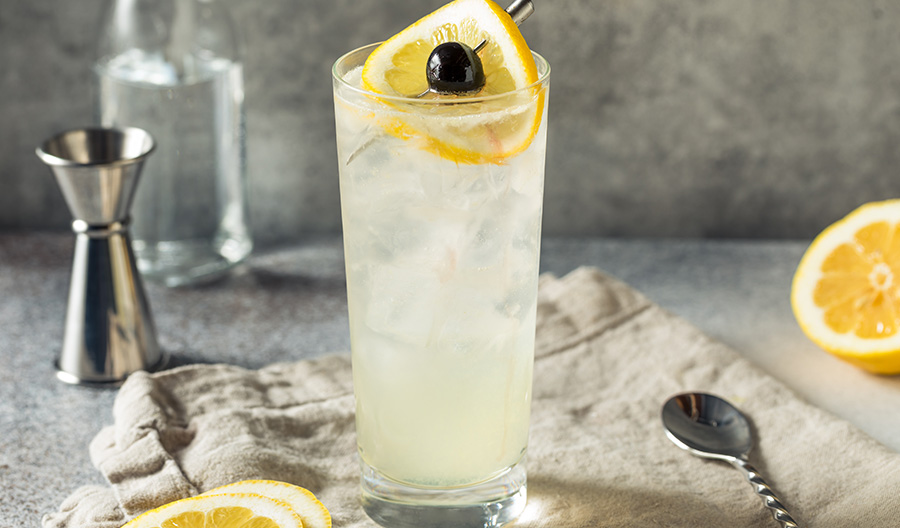In cocktails, we tend to use highballs and Collins glasses interchangeably. Both are tall, narrow glasses meant for drinks that are served with ice and topped with a carbonated component, like soda water or sparkling wine. But there are slight differences in the size, shape, and history of these two iconic pieces of glassware.
Named after the classic Tom Collins and John Collins cocktails, the Collins glass is slightly taller and sometimes wider in diameter than the slimmer highball glass. While the etymology of the highball glass is somewhat murky (some stories point to the term originating with railroad work, others with Irish golf courses), its primary use is for the highball category of drinks, a classic template that involves a 2:1 ratio of spirit to sparkling non-alcoholic mixer.
Highball Glass
8–12 ounces in volume
Used for drinks with ice and a carbonated component
Shorter and often narrower than Collins glasses
Intended for two-part drinks, with only a spirit and mixer
Collins Glass
10–14 ounces in volume
Used for drinks with ice and a carbonated component
Taller and sometimes wider than highball glasses
Intended for drinks with more than two parts
Why are Collins and highball glasses different?
Though often hardly noticeable in day-to-day usage, the differences between Collins and highball glasses have a practical purpose. The Collins glass is intended for a multi-ingredient mixed drink topped with a sparkling component, while the highball was originally intended for a spirit and a mixer only. This means, on paper, that the final volume of each drink should be slightly different.
Though the Tom Collins is the most well known of the Collins family of drinks, a number of other variations exist, like the John Collins, which uses a base of bourbon (though it was originally made simply with a different style of gin than the Tom Collins). What all Collins cocktails have in common is a base spirit combined with both lemon and sugar. For example, the Tom Collins contains 2 ounces of gin, 1 ounce of lemon juice, and ½ to 1 ounce of simple syrup, topped with soda water.
Conversely, one of the most famous highballs in existence, the Gin & Tonic, simply contains 2 ounces of gin and 4 ounces of tonic water. The increased volume of the Collins glass is meant to accommodate the additional 1 ½–2 ounces of lemon juice and sugar that Collins-style drinks include.

What’s the volume of a Collins or highball glass?
These two glasses are so interchangeable in usage because modern glassware across the spectrum has such a wide variability.
The volume of highball glasses traditionally would be around 8–12 ounces, while Collins glasses would tend to be around 10–14 ounces, though even these ranges could fluctuate. Given the overlap, many glassware producers started to make a single glass that could cover most bases and be used for both Collins and highball style drinks.
Bars and restaurants have mostly adopted this one-glass-fits-all approach as well, to cut down on the types of glassware they have to stock. Today, most Collins/highball glasses you’ll find in bars tend to be around 12 ounces.
What’s the purpose of a highball or Collins glass?
Whether a highball or Collins glass, the tall and narrow chimney-like design serves two purposes. It keeps ice cubes stacked vertically, with each cube directly in contact with the one above it, reducing the surface area that touches the drink. It also minimizes agitation, or loose ice clinking around the drink. Both of these factors work to make the ice melt more slowly, and prevent excessive dilution over time.
The narrower opening at the top of the highball and Collins glass, compared to rocks glasses or other types, also creates less surface area of the drink in contact with the air. This keeps the carbonation from dissipating as quickly as it would in a wider-mouth glass, and allows for greater head retention in drinks like Fizzes.

